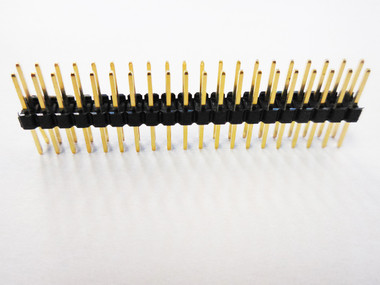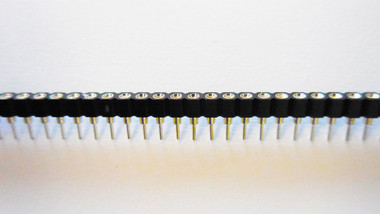 Loading... Please wait...
Loading... Please wait...Categories
Blog - headers
When to Use Male vs. Female Headers in PCB Design
Posted by Schmartboard on May 3rd 2025
What Are Male and Female Headers?
-
Male headers are pin-style connectors that protrude from the board. Think of them like the “plugs” in the connector world.
-
Female headers are socket-style connectors designed to receive the male pins—essentially the “jacks.”
These headers come in different configurations (single-row, double-row, straight, right-angle) and sizes (pitch, height), and they serve different purposes depending on the layout and accessibility of your PCB.
When to Use Male Headers
Male headers are commonly used when:
-
You want a low-cost, compact connector.
-
You’re planning to use female jumper wires, like those in Schmartboard’s jumper kit.
-
The board is part of a stack, and you want signals to pass upward into another board.
-
You’re designing an accessory or shield (such as with Arduino), and need to plug it into a base board.
Example: Schmartboard's jumper wires with female connectors are ideal for connecting to male headers on breadboards or Schmartboard prototyping modules. These connections are fast, secure, and easy to modify—perfect for rapid prototyping.
When to Use Female Headers
Female headers are the right choice when:
-
You want to receive male pins, such as from a daughterboard, sensor, or external module.
-
Your design includes removable components or stackable modules.
-
You’re trying to protect pins from environmental exposure or accidental contact.
-
You prefer to use male jumper wires, which easily insert into female headers.
Example: If you're working with Schmartboard’s male-to-male jumpers and want to plug them into a board, then your PCB should have female headers installed. This is especially useful in situations where the board might be inserted into a case and you don’t want pins sticking out.
Design Tips
-
Plan for mating: Make sure your chosen headers match the connectors on other components in your design (male-to-female).
-
Consider orientation: Use right-angle headers for edge access or vertical headers for stacking.
-
Space accordingly: Check the pitch (usually 2.54 mm) and clearance needed around headers.
-
Use Schmartboard jumpers: Their jumper wires come in male-male, female-female, and male-female combinations—great for quick swaps depending on your header choices.

Summary: Match Your Headers to Your Use Case
| Use Case | Recommended Header Type |
|---|---|
| Connecting to female jumper wires | Male header |
| Receiving male jumper wires | Female header |
| Stacking or shield-style boards | Male header |
| Protecting pins / modular access | Female header |
Final Thoughts
Choosing between male and female headers in PCB design isn’t just about hardware—it’s about workflow, accessibility, and the flexibility of your development process. By combining the right headers with high-quality jumpers, such as those offered by Schmartboard, you can create a prototyping environment that’s both robust and user-friendly.
Explore Schmartboard’s jumper wire kits and prototyping boards to elevate your electronics design process with reliable and customizable connections.
Recent Posts
- » Do Inspect Solder Joints Under Magnification for Intermittent Issues
- » Don’t Assume Power Supplies Are Perfectly Clean
- » Do Choose the Right PCB Stack-Up Early to Support Signal Integrity
- » Do Route High-Frequency Signals with Controlled Impedance
- » Don’t Overcrowd the Board — Leave Room for Debugging


